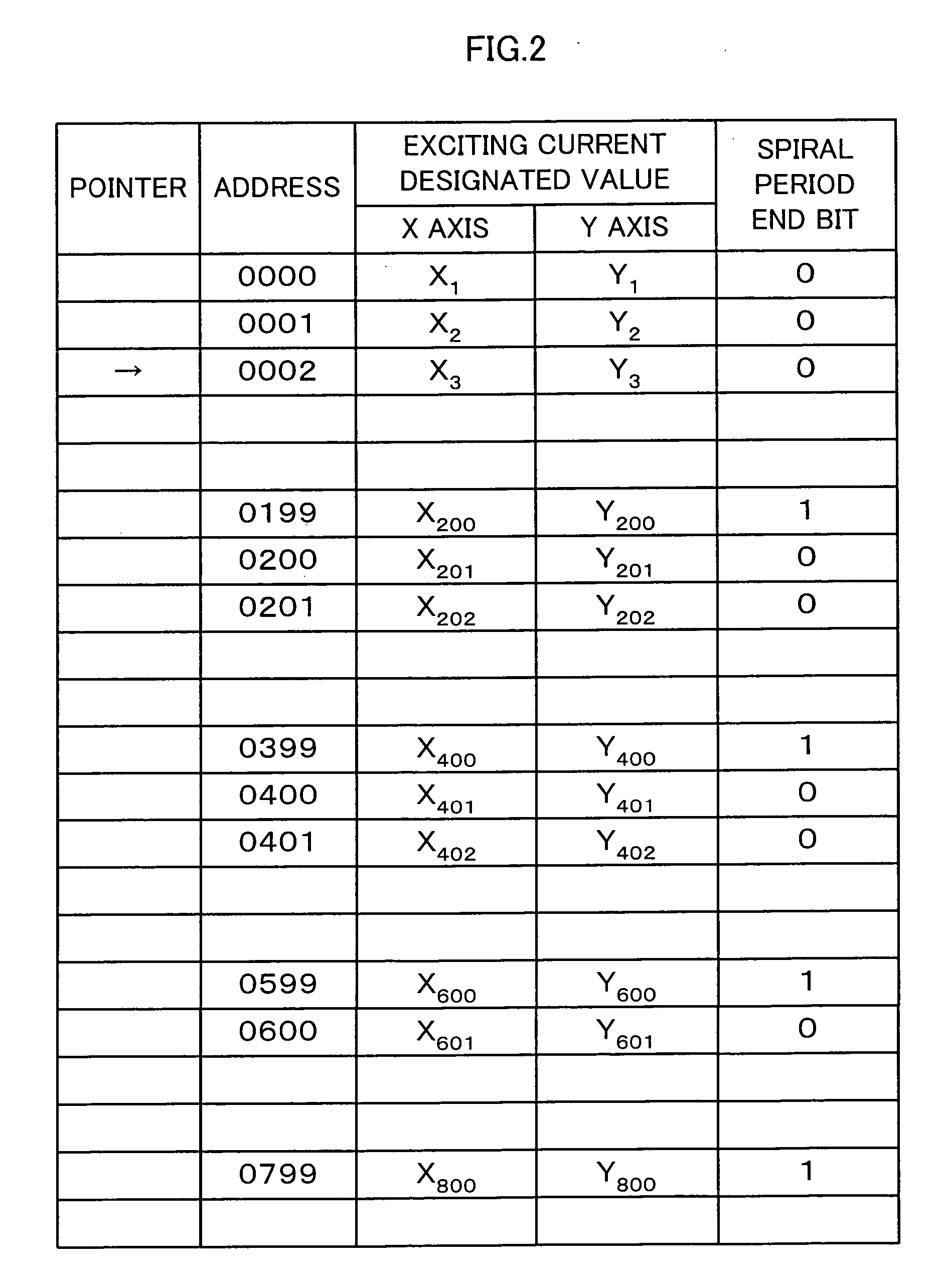Particle beam therapeutic apparatus
a technology of particle beam and beam beam, which is applied in the direction of optical radiation measurement, machines/engines, nuclear elements, etc., can solve the problems of inability to ensure the uniformity of dose distribution in each the constraint in the operation period of the accelerator, and the inability to shorten the supply time of the particle beam
- Summary
- Abstract
- Description
- Claims
- Application Information
AI Technical Summary
Benefits of technology
Problems solved by technology
Method used
Image
Examples
embodiment 1
[0051]FIG. 1 is a block diagram that shows a particle beam therapeutic apparatus according to a first embodiment of the present invention. FIG. 2 is a view that shows the data structure of a data table in a data storage part according to the first embodiment of the present invention, and FIG. 3 is a block diagram of a beam detection device according to the first embodiment of the present invention.
[0052] As shown in FIG. 1, the particle beam therapeutic apparatus, generally designated at reference numeral 1, according to the first embodiment of the present invention includes a particle beam generation part 2 for generating a particle beam, a particle beam irradiation part 3 for irradiating the particle beam to a target region (diseased part) 5 of a patient, and a particle beam transportation part 4 for transporting the particle beam generated by the particle beam generation part 2 to the particle beam irradiation part 3.
[0053] The particle beam generation part 2 includes a particl...
embodiment 2
[0077]FIG. 4 is a block diagram of a turn on and off control part in a particle beam therapeutic apparatus according to a second embodiment of the present invention. FIG. 5 shows the data structure of a data table in the data storage part of the particle beam therapeutic apparatus according to the second embodiment of the present invention. In the above-mentioned first embodiment, the particle beam is turned on and off by reading a spiral period end bit stored in the data storage part 26 and inputting a pulse in the form of a spiral period end signal to the register 33, but in the second embodiment, the clock signal from the timing control device 27 is counted, and the count value thus obtained is compared with the number of divisions of the spiral period stored beforehand in the determination storage device 31, so that when the count value becomes equal to the number of divisions of the spiral period, the beam is turned on and off by sending a pulse in the form of a spiral period e...
embodiment 3
[0080]FIG. 6 is a block diagram of a turn on and off control part in a particle beam therapeutic apparatus according to a third embodiment of the present invention. The turn on and off control part 28C according to this third embodiment is different from the turn on and off control part 28 of the above-mentioned first embodiment in the addition of an immediate beam interruption function, but the other construction of this third embodiment is similar to the first embodiment, and hence like components or parts are identified by like symbols while omitting a detailed explanation thereof. In the turn on and off control part 28C according to the third embodiment, as shown in FIG. 6, an immediate beam interruption signal, which becomes a “LOW” level when the exposure dose from the determination device 32 reaches the planned dose and a “HIGH” level at the other times, is input to an AND circuit 43.
[0081] Also, the immediate beam interruption signal and a Q output of the register 33 are in...
PUM
 Login to View More
Login to View More Abstract
Description
Claims
Application Information
 Login to View More
Login to View More - R&D
- Intellectual Property
- Life Sciences
- Materials
- Tech Scout
- Unparalleled Data Quality
- Higher Quality Content
- 60% Fewer Hallucinations
Browse by: Latest US Patents, China's latest patents, Technical Efficacy Thesaurus, Application Domain, Technology Topic, Popular Technical Reports.
© 2025 PatSnap. All rights reserved.Legal|Privacy policy|Modern Slavery Act Transparency Statement|Sitemap|About US| Contact US: help@patsnap.com



